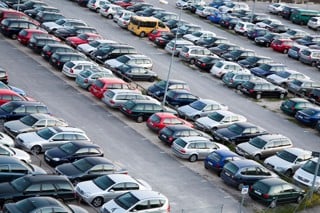Already got enough on your plate running the fleet? Well, new emissions measuring systems seem set to add to the confusion. Paul Adler reports.
With less than three months until the deadline for all cars to have been tested, or retested, under the new Worldwide harmonised Light vehicle Test Procedure (WLTP) fuel and emissions testing regime, fleets remain in a state of confusion over future emissions figures and the implications for benefit-in-kind (BIK) and national insurance (NI)contributions.
They will also, from 2019, have to contend with stage one of the Real Driving Emissions (RDE) test, which complements WLTP by measuring other emissions while the car is being driven, including NOx.
Background to WLTP
WLTP replaced the New European Drive Cycle (NEDC) in September 2017 to measure fuel consumption, CO2 emissions, pollutant emissions and the energy consumption values of all powertrains, including the range of electric and plug-in vehicles.
The new WLTP test remains a laboratory test, just like NEDC, but is intended to be much more realistic in its testing criteria.
NEDC was based on theoretical data and designed to aid comparison between models, rather than absolute efficiency, while WLTP is based on real-world data, and will deliver efficiency comparisons with a more reliable promise to the consumer.
It was developed as a global test cycle across different world regions, so pollutant and CO2 emissions as well as fuel consumption values would be comparable worldwide – hence its name.
However, while the WLTP has a common global ‘core’, the European Union (EU) will apply the test in different ways, dependent on road traffic laws and needs.
The WLTP driving cycle is divided into four parts with different average speeds: low, medium, high and extra high. Each part contains a variety of driving phases – stopping, acceleration and braking.
And for every car type, each powertrain configuration is tested with WLTP for the car’s lightest (most economical) and heaviest (least economical) version.
Consequently, as WLTP tests the cars under higher speed, with greater acceleration and braking and for a longer period, it not surprisingly results in higher official fuel consumption and CO2 emission figures compared with NEDC.
And for engines featuring electrification or hybridisation, it can reduce the stated range.
Background to RDE
Complementary to WLTP, the Real Driving Emissions test measures the pollutants, such as NOx, emitted by cars while driven on the road, rather than in the lab. Essentially, RDE ensures cars continue to deliver low emissions during on-road conditions. The clear implication is that so-called ‘cheat devices’ will be foiled.
Under RDE, a car is driven on public roads and over a wide range of different conditions with specific portable emission measuring systems (PEMS) installed on the vehicle to collect the data. The results will verify that legislative caps for pollutants such as NOx are not exceeded.
These real, driving conditions include:
- Low and high altitudes
- Year-round temperatures
- Additional vehicle payload
- Up- and downhill driving
- Urban roads (low speed)
- Rural roads (medium speed)
- Motorways (high speed)
Despite the deadlines for WLTP (see panel on P40), there is some leeway for manufacturers in the form of derogation. Derogation literally means, “an exemption from or a relaxation in the rule of law”.
The European Commission recognises that manufacturers don’t operate in a vacuum and the economic climate and customer demand may mean that non-WLTP homologated vehicles are still in stock after September 1, 2018.
Therefore, EU member states will set their derogation parameters to allow a number of these non-WLTP homologated cars to be registered after that date.
In the UK, the Department for Transport (DfT) has determined that the limits for manufacturers to register vehicles after September 1, 2018, will be 10% of manufacturer sales or 2,000 vehicles, whichever is the greater.
In addition, the UK operates the “three-month rule”, whereby vehicles built less than three months prior to a new regulation taking effect are not eligible for derogation.
This is to encourage manufacturers to change their production lines at least three months prior to the new regulation taking effect.
So, any non-WLTP homologated vehicle built between June 1 and August 31 must be registered before September 1.
As that coincides with the change to the new 68 plate, this can cause significant customer and logistical challenges, so most manufacturers are likely to plan to only produce WLTP-homologated cars in this period.
However, one major leasing company fears a flood of non-WLTP cars ahead of the September deadline, which could unsettle the market.
Tim Buchan, chief executive of Zenith, told Fleet News: “We see non-WLTP stock being churned out and then we see limited availability of vehicles in the last quarter.
The consumer market will spike in August with brokers and dealers, and then there will be a lack of product. It will create a lumpy car parc.”
The implementation of WLTP and RDE needs to work through each member states’ taxation laws and therefore there are some implementation nuances that impact the UK.
The first question that fleets may well ask is “what about Brexit?”. The DfT has explicitly said that until exit negotiations are concluded, the UK remains a full member of the EU and all the rights and obligations of membership remain in force, so EU legislations are fully applicable.
Therefore, the UK implementation plan is:
- Fuel consumption figures in all consumer-facing materials must change over from NEDC to WLTP on January 1, 2019.
- CO2 emissions figures will change from WLTP-derived to WLTP on April 6, 2020, to align to the 2020/21 tax year for Vehicle Excise Duty (VED) and company car BIK taxation purposes.
- From April 1, VED and BIK were amended. For all diesels, unless they complied with RDE2, an extra fee is payable in the first year of VED while, for BIK, the diesel supplement rises from 3% to 4%. As no diesels yet comply with RDE2, all diesels increase in VED and BIK.
The new world of WLTP and RDE is complex and has the potential to cause confusion across Europe and in the UK. And it will certainly have significant ripple effects in the UK fleet industry.
So, what are the manufacturers doing? The short answer is ‘moving at different speeds’.
BMW has been one of the most proactive and has tested and published figures for the majority of its cars.
The company says it is “business as usual”, although it has taken the decision to temporarily cease production of the 44g/km 330e plug-in hybrid model from the end of July due to the results of WLTP testing.
It is expected to go back on sale from next January. Interestingly, the 330e’s bigger brother, the 530e, continues in production and had no change to CO2 at 46g/km.
Other manufacturers have not been as quick off the mark as BMW, and there is a real risk that not all models will have been retested before the September deadline.
Audi head of R&D Peter Mertens said the switch from NEDC to WLTP and RDE is “a significant journey for the whole industry and those manufacturers with many powertrain combinations will find it much more challenging to re-homologate existing engines”.
The complexities and enormity of the challenge of retesting is much bigger than going from say, Euro 5 to Euro 6 diesel standards, as it involves petrol engine homologation, too. This gives manufacturers a major headache.
While they have been planning for WLTP and RDE extensively, some have timed the launch of new engines to achieve optimal CO2, mpg and NOx results before the WLTP deadline.
However, many engines cannot be re-engineered ahead of WLTP, or are too costly to do so, therefore their published emissions and fuel economy may deteriorate significantly from NEDC figures.
Impact of WLTP – CO2
Moving from NEDC to WLTP has significant implications for fleet operators and company car drivers. Taking one of the most popular user-chooser company cars, the BMW 3 Series, there have been some significant impacts through WLTP homologation.
The user-chooser favourite, the desirable 320d M Sport, has seen CO2 emissions rise from 116g/km to 127g/km – a jump of two BIK bands. For a 40% taxpayer, that equates to a rise of more than £800 in BIK taxation over a three-year period.
Another example of WLTP homologation affects the Toyota Prius. Under NEDC, the Prius had CO2 emissions of 70g/km, but they rise to 78g/km under the WLTP test. This means the Prius is no longer Congestion Charge exempt in London (up to 75g/km) and its BIK tax band increases from 13% to 17%.
A 20% tax-paying company car driver will have to find an additional £500 in BIK over three years.
These examples highlight some changes brought about through WLTP homologation.
But the fact that BMW and Toyota have already announced new figures demonstrates they have a clear plan to deal with WLTP and both should be commended in making transparent the challenges and allowing the fleet industry to adapt.
Impact of WLTP – vehicle specification
Another consequence of WLTP is the requirement to test the lightest and heaviest versions of the same powertrain. An example of this is the comparison of the base car versus one with additional factory options such as larger alloy wheels or a panoramic glass roof.
These options are heavy and will affect the efficiency of the car, resulting in a higher CO2 and increased fuel consumption. Exactly how manufacturers will handle factory options is not clear at this stage, but we may see them clustering options together in packs to simplify choice.
One innovative solution has been shown in the Seat Arona crossover.
Under its ‘Easy’ banner, Arona derivatives don’t have any factory options. Instead, Seat has gone for a wide range of derivatives with increasing specification, simplifying both the driver choice and the WLTP homologation.
What are the implications for the UK fleet industry?
Fundamentally, WLTP and RDE are already causing, and will continue to cause, headaches for manufacturers, dealers, leasing companies, data providers and fleet operators over the next few months.
This is exacerbated by the continuing pressure exerted by exchange rates, which is affecting manufacturers’ UK profits.
If you’re the senior leader at a manufacturer deciding where to send your precious allocation of build-for-non-WLTP-compliant cars, are you really going to prefer to allocate to the UK with its lower profit margins?
Some manufacturers have got a clear view and are well prepared for WLTP and RDE. However, even these manufacturers will face challenges.
And some don’t yet know when their new, WLTP-homologated cars are going to be orderable in the UK and, by implication, when they’ll be delivered to customers.
In terms of what we know today, the challenges of WLTP and RDE mean there will be production issues that the fleet industry will need to prepare for. Some models and powertrains, like the 330e, will cease to be available – either temporarily or permanently.
There will also be gaps in production between old NEDC homologated engines and new WLTP homologated ones as manufacturers juggle production capacity.
Furthermore, just as WLTP and RDE homologation is complex and challenging, it is also expensive and costly for manufacturers.
Some have timed the WLTP homologation process with the launch of new engine ranges, such as PSA with its 1.5 diesels replacing 1.6 diesels.
A slightly less costly solution, but nevertheless a time-consuming engineering challenge, is to develop new gearboxes.
PSA will introduce new six-speed manual gearboxes replacing five-speed on some models, while six-speed automatics will migrate to new, more efficient eight-speed.
The industry has been familiar with diesel particulate filters for many years, but to comply with RDE and, in particular, NOx emissions, petrol engines will increasingly require gasoline (petrol) particulate filters. These will also be costly.
Given that WLTP and RDE homologation is expensive for manufacturers, we can expect some of this cost to be passed on to customers.
The scale and importance of the UK fleet sector will help minimise this, as will its sheer competitiveness and the slight contraction in demand and registrations over the past year. But, it is fair to assume that car prices will rise.
What can fleet operators do?
WLTP and RDE implementation is bringing change: some of it immediate and some of it imminent. And change requires management.
While all the outcomes of WLTP and RDE are not 100% clear, there are clear signposts for fleet operators.
Certainly, gathering as much information on the vehicles on your current choice list would be helpful. Is it WLTP compliant? Is it still orderable? When will orders be delivered? When will it need to be registered? And so forth.
It might also be opportune to review your choice list parameters. Many fleet operators run strict CO2 emission parameters from their choice lists; sub 100g/km or sub 130g/km ceilings are quite common, for example.
It is possible that some popular cars on a choice list will ‘fall out’ of a certain grade, so decisions will need to be made on whether to amend the choice list, review suppliers or manage drivers’ expectations.




















Login to comment
Comments
No comments have been made yet.